“Artist’s Proof: Singapore at 60” features more than 50 artists (mostly Singaporeans), including Cultural Medallion recipients Cheong Soo Pieng, Chua Mia Tee, and Lee Wen. The list also includes established names like Tang Da Wu, Wong Keen, Ming Wong, and John Clang, as well as exciting new names, such as Israfil Ridhwan, Khairulddin Wahab, Loi Cai Xiang, Dawn Ng, Shavonne Wong, Ng Joon Kiat, and Hilmi Johandi.
More than a retrospective, it is also the first time Chong has commissioned artworks—11 new pieces, along with an original musical composition—specifically for an exhibition to capture the dynamics of the country’s creative scene. “Nurturing local talent, particularly the younger generation, is incredibly important to me as we envision a sustainable future for the arts in Singapore,” he says. “Commissioning allows us to move beyond mere patronage and become direct catalysts for creation.”
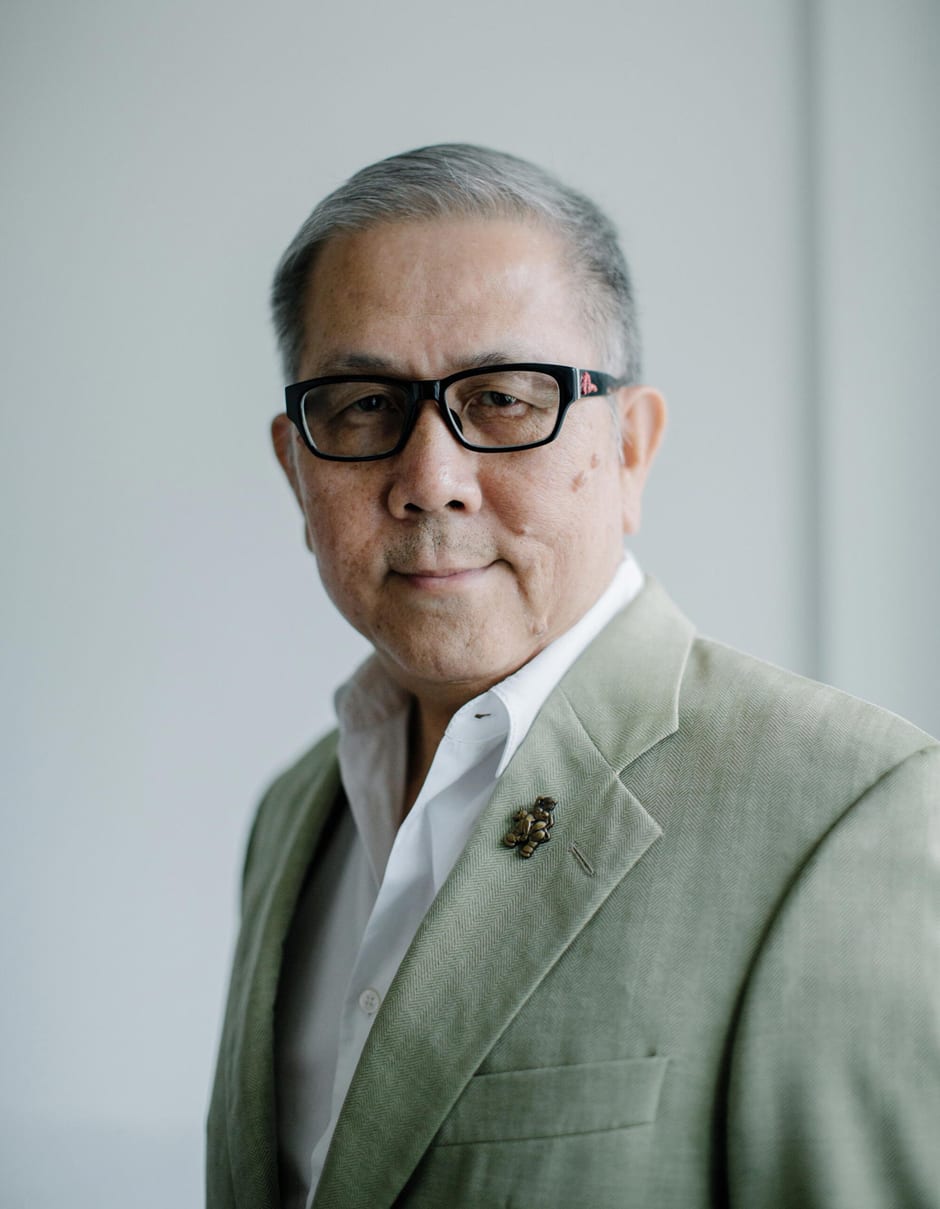
THE Collector’s ROLE Beyond Possession
Singapore’s private collectors have become increasingly influential in recent years. Since becoming passive connoisseurs, they have become progressively involved in the art ecosystem, organising exhibitions, supporting residencies, funding publications, lending or donating works to institutions, and creating art spaces.
Take The Culture Story. Founded in 2017, it shares the Chongs’ collection with other art lovers, engages the broader community, and inspires greater interest. As he insists, “For Singapore’s art and artists to thrive, we private collectors should look beyond personal acquisition and actively foster public interaction with local art.”
Another example is Primz Gallery, established by prominent Singaporean collectors Linda Neo and Albert Lim in 2014. Their shows explore socio-political themes and encourage deeper engagement with Singapore and the region, often in conjunction with Art SG and SEA Focus’s VIP programmes.
To date, they have curated eight exhibitions, including Jane Lee’s solo shows in 2017 and 2023. Known for her thickly layered, tactile surfaces and process-driven style, Lee’s ‘Melt VII’ (2017) was sold by Sotheby’s for $190,500 in July 2023.
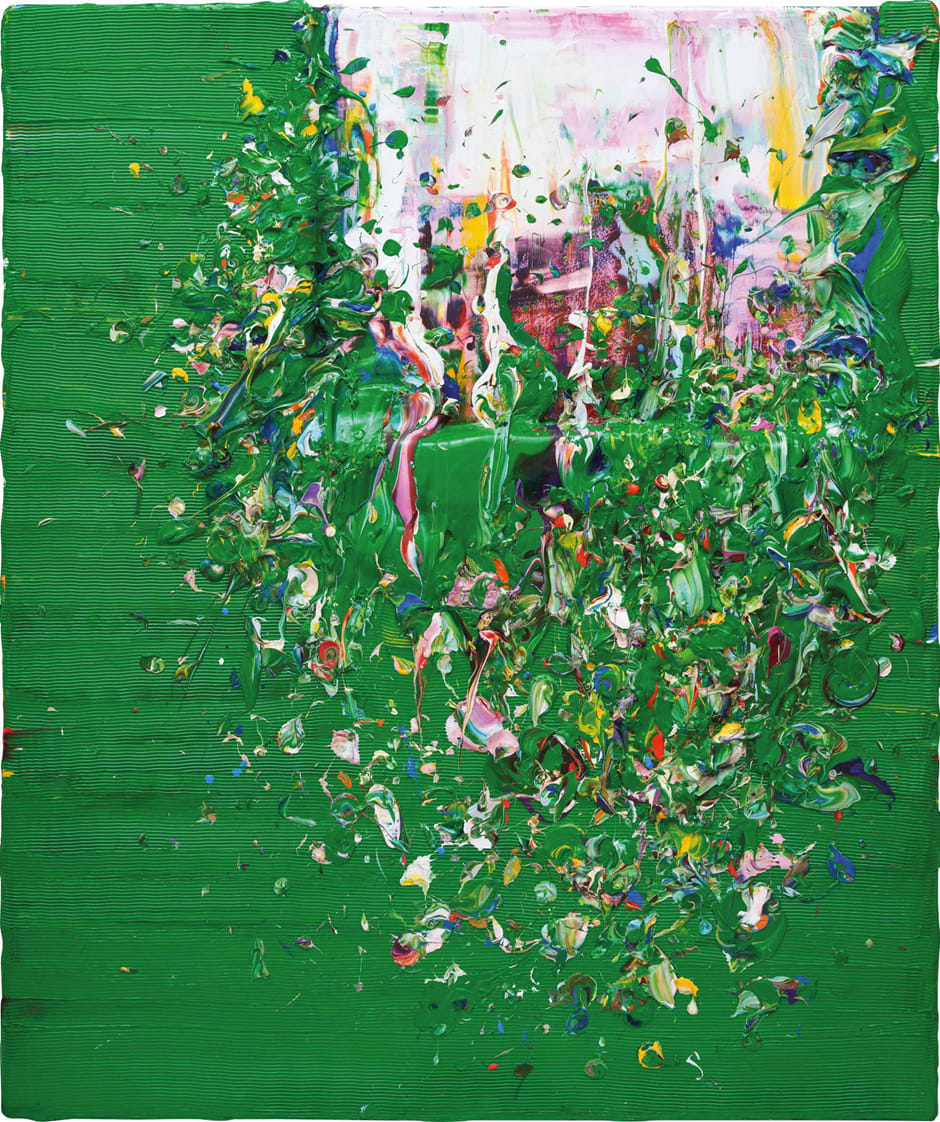
‘Melt VII’ (2017) by Jane Lee was sold by Sotheby’s for $190,500 in July 2023.Photo: Sotheby’s
Neo explains why they shifted from Western art to local Singaporean art: “Supporting local artists and art is a natural progression… The local art scene can only thrive with homegrown collectors like us.”
Convinced that private collectors must do more than purchase works to sustain the legacy of Singaporean artists, Neo and Lim donated 10 Lim Tze Peng artworks to the National University Museum in 2015. These were exhibited during “The Evening Climb: The Later Style of Lim Tze Peng” in 2016.
Neo extended her contribution to the scene by serving as chairperson of Oh! Open House, championing alternative storytelling through activities such as art walks around Singapore. She also co-founded Art Addicts Anonymous, a grassroots initiative that introduced new art lovers to the scene. During Singapore Art Week 2024, 15 collectors presented “Chronic Compulsions: Selected Works From Art Addicts Anonymous” at The Private Museum.
Shining THE Light on Forgotten or Little-Known Artists
Singapore-based collector Krystina Lyon, who describes her pieces as personal rather than private, emphasises the similar ethos of connection and sharing: “I do not collect art for investment or legacy.”
She elaborates further on the unique position of private collectors: “Unlike institutions, which must work within clearly defined acquisition policies and long-term mandates, personal collectors can take risks, supporting artists at pivotal moments. We can bring visibility to voices that might otherwise remain overlooked: artists who challenge dominant narratives around gender, identity and belonging.”
Lyon, who collects contemporary Southeast Asian women artists, believes her role goes beyond collecting and includes connecting people, ideas and generations through interviews, informal mentorships, and publishing. Her forthcoming book on her collection, You Are Seen: Women’s Contemporary Art Practices in Southeast Asia, set to launch at Art SG 2026, promises to further amplify underrepresented voices.
By creating space for more women to see themselves reflected in contemporary art, she hopes to contribute to “a deeper, more inclusive culture of collecting in Singapore and beyond”. Lyon’s collection features many female artists who contributed to shaping our cultural identity, including sculptor Han Sai Por, conceptualist Suzann Victor, and abstractionist Kim Lim. The recent resurgence of interest in Lim, with her auction record of $168,000 for ‘Ronin’ (1963) at Sotheby’s Singapore sale last January, spotlights a growing appreciation of previously unnoticed voices in art history.
Lyon underlines the vital behind-the-scenes role Singapore-based collectors play in raising the profile of pioneer and contemporary generations of Singaporean artists: “Beyond acquiring works, many of us also serve as informal ambassadors, introducing local artists to curators, institutions and collectors abroad. We lend to international institutions and exhibitions, participate in dialogue, and share context needed for deeper appreciation.”
A Rising Market, A Rising Tide
Singaporean collectors are now major players in the rising visibility and valuation of homegrown artists, both domestically and abroad. Auction houses like Sotheby’s and Christie’s observe surging interest and record-breaking results. In the first half of 2025, for instance, collectors increased spending on art and luxury at Christie’s Hong Kong by nearly 20 percent. Southeast Asia, led by buyers in Singapore, was the third highest buying market (following mainland China and Hong Kong) in Christie’s sales of 20th- and 21st-century art in March 2025.
Sotheby’s also reported a 60 percent increase in Singapore-based bidders in the company’s global sales since 2022 when it relaunched art auctions in the city-state after a 15-year hiatus. Significantly, 20 percent of new buyers at its Singapore auctions are 40 years or younger—a signal of generational renewal.
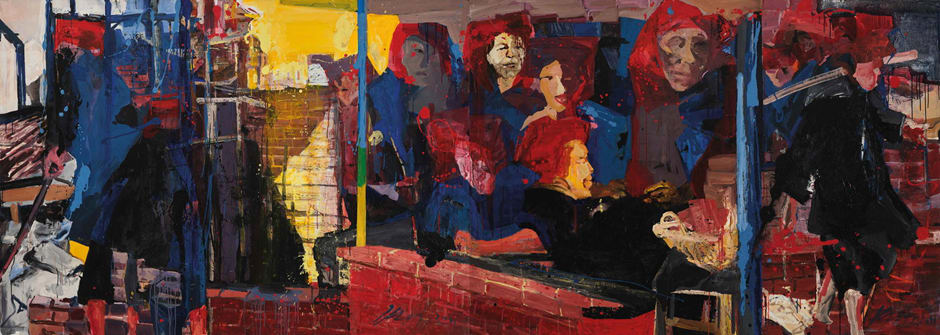
Jasmine Prasetio, Managing Director of Sotheby’s Southeast Asia, echoes the critical role of local backing: “The success of a nation’s artists begins domestically. It is very important for Singaporeans to support Singaporean artists.” Singaporean and Southeast Asian collectors have grown increasingly active in Sotheby’s Asia and global auctions, but the former have demonstrated a strong, consistent commitment to collecting local modern and contemporary artists, while expanding their interest in international names.
Dexter How, Vice President and Senior Specialist for 20th/21st Century Art at Christie’s Asia Pacific, affirms: “We see Singaporean clients proudly and avidly collecting Singaporean artworks across the modern and contemporary eras, focusing on rarity and quality in a selective market. This speaks to a desire to connect with their culture and heritage, as well as enthusiasm for supporting homegrown talent.”
This uptick coincides with the global recognition of Singapore’s modern masters, particularly pioneers of the Nanyang style of painting. Known for her still-lifes and portraits, Georgette Chen’s ‘Still Life with Big Durian’ (circa 1965) snagged a world auction record by fetching HK$14,290,000 (S$2,332,611) at Christie’s Hong Kong in May 2023. This was just six months after her ‘Still Life with Rambutans, Mangosteens and Pineapple’ (circa 1960s) sold for HK$13,050,000.
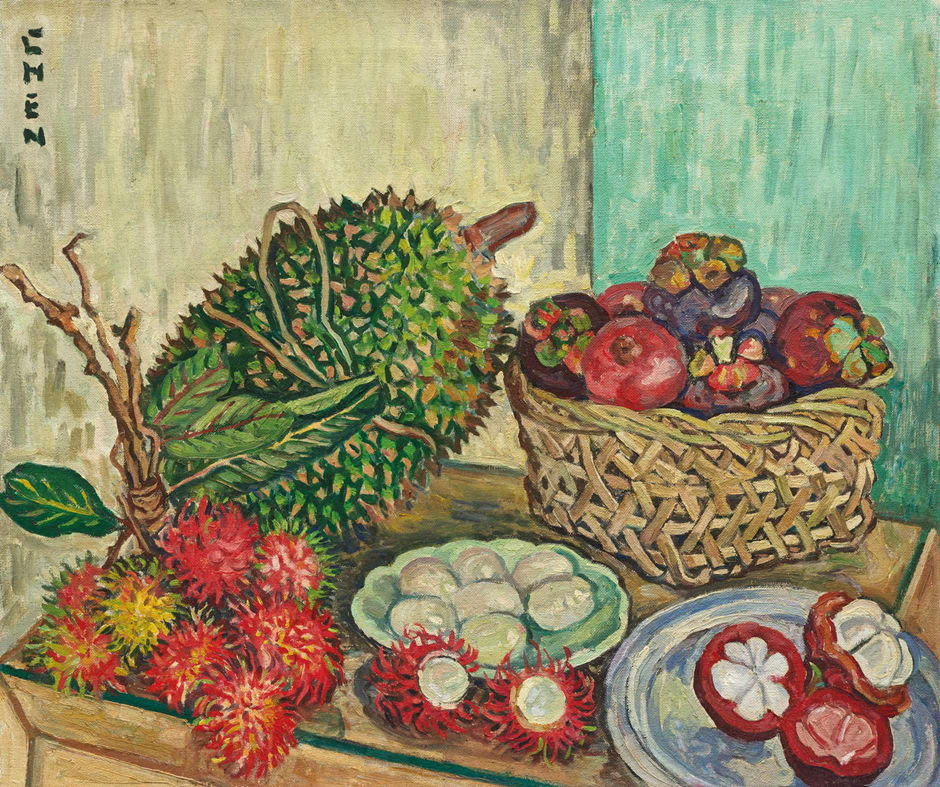
‘Still Life with Big Durian’ (circa 1965) by Georgette Chen, set a world auction record with HK$14,290,000 at Christie’s Hong Kong in May 2023.Photo: Christie’s Ltd Images 2025
Meanwhile, Cheong Soo Pieng’s ‘Nature’s Inspiration’ (1963) hit HK$11,507,000 at Christie’s Hong Kong in November 2023, setting a world auction record for the artist. Liu Kang, known for his vibrant depictions of Balinese scenes, achieved a personal record with ‘Pounding Rice’ (1953), which went for $698,500 at a Sotheby’s Singapore auction in 2023.
Lim Tze Peng, the Singaporean national treasure celebrated for his Chinese ink paintings and distinctive calligraphic style, achieved HK$1,250,000 with ‘Singapore River Scene’ (1983) at Christie’s Hong Kong in 2021. Tan Swie Hian’s ‘Portrait of Bada Shanren’ (2013), one of the most expensive artworks sold at auction by a Southeast Asian living artist in 2014, topped the list at $4.4 million at Poly Auction in Beijing.
The New Wave: Visionaries of Contemporary Singapore
There is also a vibrant wave of mid-career and emerging Singaporean artists paving new paths. In diverse media, they address urgent themes such as climate change, identity, urbanisation, and technology. In international biennales, these reflect collectors’ concerns and questions. Neo’s collection, for instance, includes Donna Ong and Heman Chong. Using found objects and installation, the former creates dreamlike realms, while Chong explores incompleteness in his first major survey exhibition.
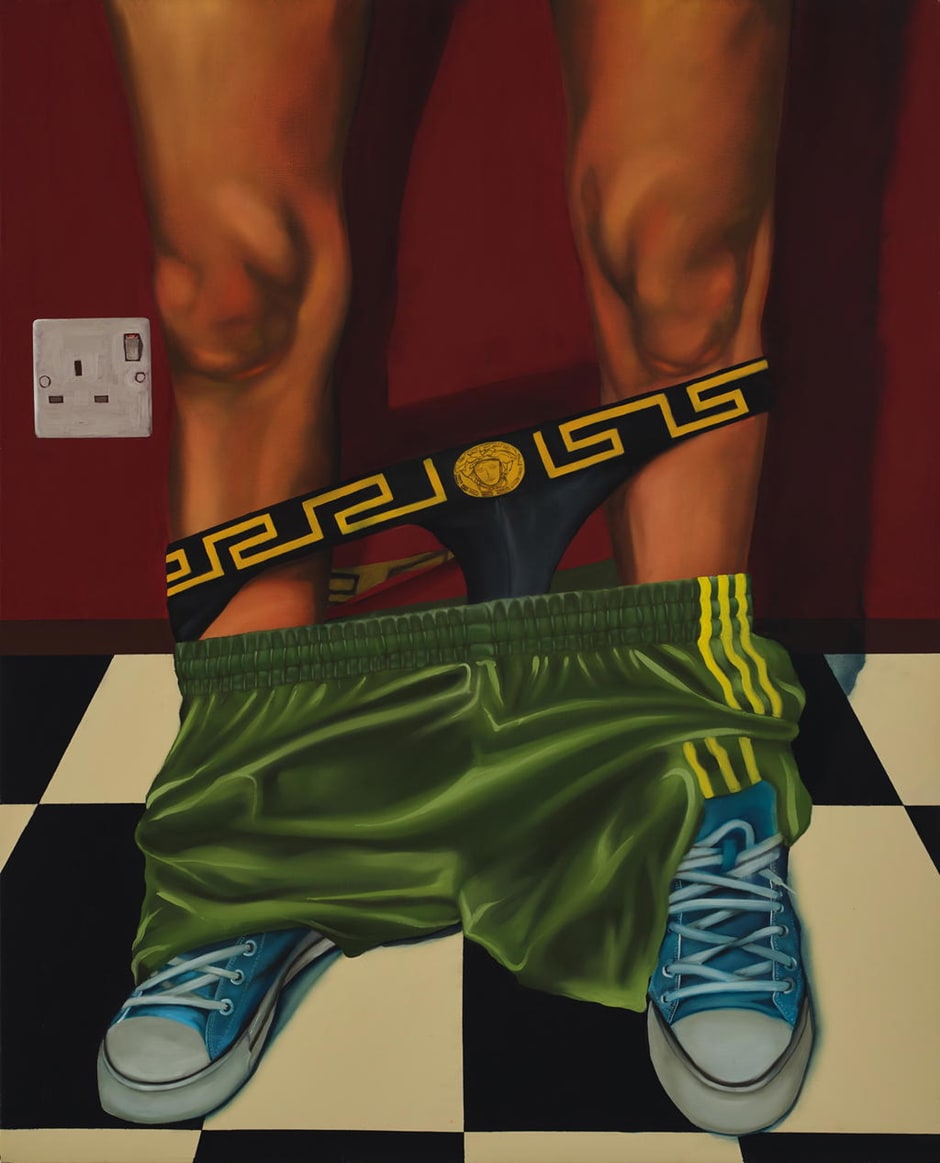
‘Real Life’ (2023) by Israfil Ridhwan.
Photo: Israfil Ridhwan & The Culture Story
Dawn Ng, another up-and-coming artist, uses vibrant colours and everyday materials to explore time, memory, and nostalgia. In Wyn-Lyn Tan’s abstract landscapes, subtle textures evoke mood and atmosphere, while Melissa Tan’s intricate sculptures depict natural forces and rock fragments.
Then there is Ho Tzu Nyen, perhaps the most international artist of his generation, who is the artistic director of Gwangju Biennale 2026. In his multi-layered artworks, he relates Southeast Asian histories and myths with scholarly precision and theatrical flair. Until 11 January 2026, Luma Arles in France features five of his multimedia installations from over a decade of work.
Through “Artist’s Proof: Singapore at 60”, Chong hopes to inspire more people to collect art. Private patronage can make Singaporean art a global force. “It is a testament to how private patronage can propel Singaporean art onto the global stage and contribute to the growth of our cultural landscape.”


